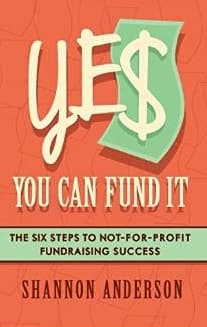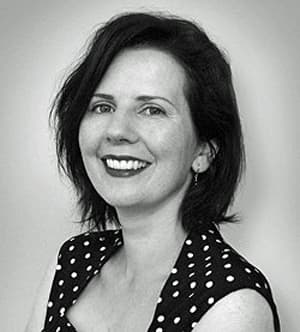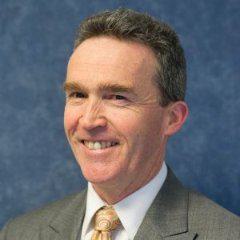The six essential building blocks of fundraising success
- Written by
- Roewen Wishart
- Added
- January 08, 2015
Book review
Yes You Can Fund It by Shannon Anderson
Reviewed for SOFII by Roewen Wishart

An Australian fundraising text is unusual and this well-written 200 pages is worth buying and reading. It will be highly useful for managers new to fundraising, fundraisers new to management and to board members seeking a context for a not-for-profit’s fundraising strategy. But there’s also real value for more experienced fundraisers. By distilling the thought process to ‘six essential building blocks’, we are encouraged to move past complexity and find clarity by formulating answers to six deceptively simple questions.
Building blocks and donors’ questions
For me, the first half of this book is particularly interesting. Shannon Anderson begins from the premise that fundraisers need to have a thorough understanding of the organisation’s strategy, funding sources, funding needs and impact measurement. Only with these pre-conditions will fundraising be most effective and fundraising case statements be most persuasive for donors, particularly discerning donors who make their gift decision after careful consideration.
This is not a new insight, it is found in most authoritative texts on fundraising strategy. What’s notable about this book is the simplicity and freshness of the language. You already (I hope) understand the requirements of a ‘case statement’. Or you will do this as you prepare to become accredited as a CFRE (hint for all fundraisers with five years or more experience – you are now ready to prepare to have your professional skills, knowledge and experience recognised).
If we can define these six building blocks, our case for support will be stronger and more distinctive. I am using the term ‘case for support’ here broadly, referring to the whole fundraising strategy, rather than a specific ‘capital campaign case statement’.
Briefly, the building blocks are as follows (in parentheses is my paraphrase of how a donor might perceive them as questions, for five):
- Identification of the main factors in the external environment that affect your organisation.
- Stating the organisation’s overall strategy. (What does it do and how do its pieces fit together?)
- Defining and explaining the organisation’s programme or service model. (How does it provide benefits?)
- Costing the organisation’s funding needs, according to programmes. (What does the organisation need money for?)
- Documenting the organisational story – history, brand and people’s stories. (What makes me feel connected to the organisation?)
- Building a financial network of influence for the organisation. (Which credible people endorse the organisation?)
Two comments on what might seem obvious building blocks.
Firstly, Australians look at the role of government in a particular way, different to the USA from which many fundraising texts originate. Put briefly, Australian donors are more likely to have an implicit question ‘shouldn’t government be funding that?’ rather than an implicit attitude like ‘of course we wouldn’t want to depend on government to provide services, so we need to give’ (my archetype of how a US donor might think and feel). The first three building blocks (and, by extrapolation, the fourth) require us to be very clear about how our organisation and its financial needs complement government services.
Secondly, I recommend a careful read of the sixth building block. It describes more than a need for ambassadors and celebrities, or major donors and board members of influence and credibility, or for media contacts. The additional element – ‘thought leaders’ who may be none of the above – is well worth systematic attention.
Applying the building blocks in an organisation
What I like about this book is the fresh and plain English presentation of what’s required in this framework. The great virtue is that it requires of us the discipline to step away from our daily involvement in the organisation and look with fresh eyes at how a prospective donor would see the organisation. Of course this is easier for a consultant and easier at the beginning of a new job, compared to doing it after working in an organisation for some years. Shannon Anderson’s career background includes business planning and organisational management before 2004, when she started her fundraising and NFP management work, and the benefits of her experience are evident.
When someone has worked in an organisation for a while, assumptions creep in. An example from my own current field, medical research, is: ‘everyone understands that only through research can we find cures for diseases’ (in fact, that’s one of our key brand messages). But what if half of our entire universe of potential donors aren’t persuaded, or at least unconsciously accepting, of one of the essential building blocks? In this case, it’s the ‘service model’ – how a research institute creates benefits for the community.
Often people just need to hear this message briefly and simply. The CEO of Neuroscience Research in Australia, Professor Peter Schofield, has a great way to tell this: at the height of the polio epidemic, plenty of people concentrated on producing better and cheaper iron lungs (the positive pressure breathing device needed by people suffering severe diaphragm muscle paralysis). Fortunately others concentrated on how to do away with the need for iron lungs by understanding the disease process of polio and finding a cure. Both iron lung technology and vaccines were needed. Medical research took about 50 years between identifying the poliovirus as the cause (Karl Landsteiner, 1908) and creating a vaccine (Jonas Salk, 1950s).
However, in medical research, there’s more needed – because some donors or prospects want to know more than our ‘service model’. They don’t frame the question like this; rather they ask questions like ‘why are there so many duplications between research institutes?’, ‘how do your scientists collaborate?’, ‘how does all this basic scientific knowledge get turned into treatments and cures for people?’ So fundraisers in medical research need a coherent way to describe this model as a convincing story.
Part two – fundraising income, tactics, systems and processes
The second half of the book is a very competent overview of a fundraising income framework (what I would call a donor development model), fundraising product options and other important pre-conditions for a successful fundraising programme (such as a donor database, a resource plan, etc). It is an overview that new fundraising managers, CFOs, CEOs and fundraising board committees would find useful as a generic ‘survey of the field’.
I’ve given this section less attention in this review (and none to the equally competent final section on fundraising culture, change management and roadblocks). These parts of the books are also good, however it’s the first section that I think will be particularly valuable to the widest audience.
About the book
Yes You Can Fund It is published by Big Wheel Press, September 2014. You can read more about Shannon Anderson’s work at www.fullyfundit.com

About the author
 Shannon Anderson is a multi-award winning fundraiser, social entrepreneur and change leader with a passion for helping not-for-profits achieve their goals. She is the founder and director of Fully Fund It, in Melbourne, Australia.
Shannon Anderson is a multi-award winning fundraiser, social entrepreneur and change leader with a passion for helping not-for-profits achieve their goals. She is the founder and director of Fully Fund It, in Melbourne, Australia.
About Roewen Wishart
 Roewen Wishart joined Bush Heritage Australia, a nature conservation not-for-profit, in 2001. Until 2007 he was national fundraising manager and now specialises in major gifts. He is a member of the Fundraising Institute of Australia National Ethics Committee and a board member of Diplomacy Training Program, which provides human rights training for activists.
Roewen Wishart joined Bush Heritage Australia, a nature conservation not-for-profit, in 2001. Until 2007 he was national fundraising manager and now specialises in major gifts. He is a member of the Fundraising Institute of Australia National Ethics Committee and a board member of Diplomacy Training Program, which provides human rights training for activists.
















